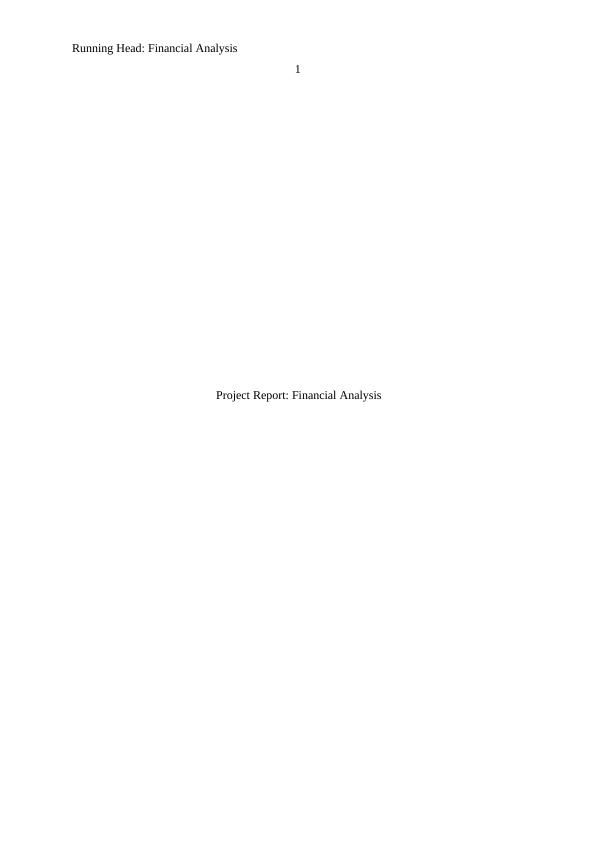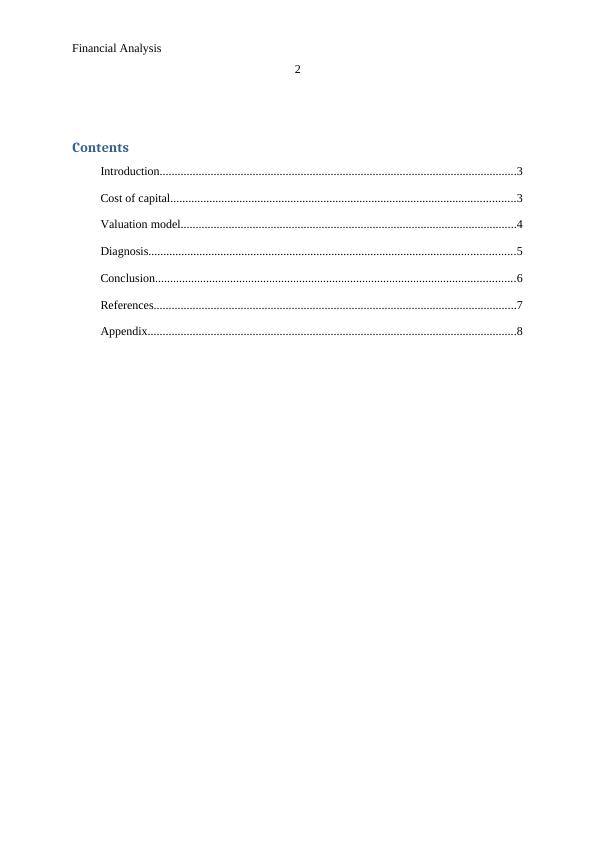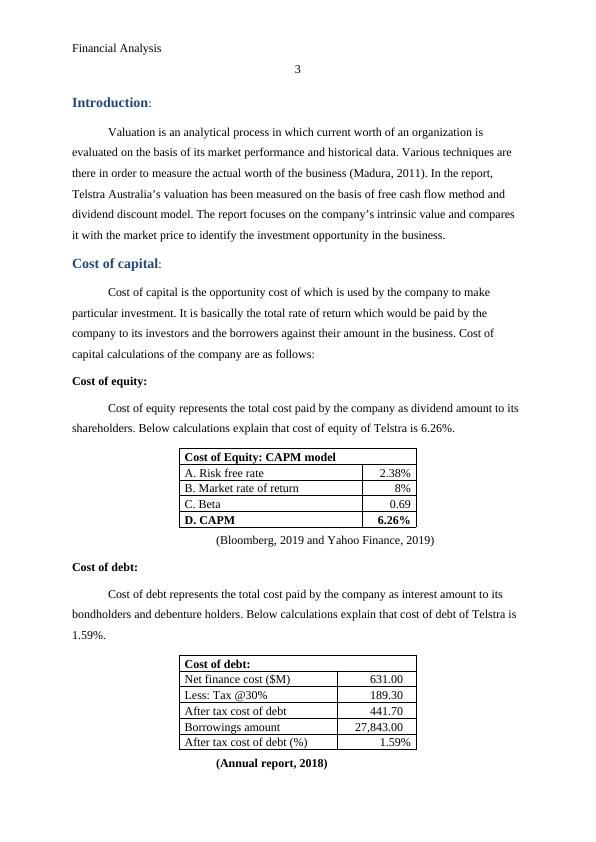Financial Analysis
Valuation flow chart, approaches to valuation, discounted dividends valuation, relative valuation, forecasting
8 Pages1085 Words454 Views
Added on 2023-03-30
About This Document
This report provides a financial analysis of Telstra Australia, including the valuation using free cash flow method and dividend discount model. It discusses the cost of capital, valuation model, diagnosis, and concludes with recommendations for investors.
Financial Analysis
Valuation flow chart, approaches to valuation, discounted dividends valuation, relative valuation, forecasting
Added on 2023-03-30
ShareRelated Documents
End of preview
Want to access all the pages? Upload your documents or become a member.
Application and Effect of Capital Budgeting
|11
|1700
|16
Determining Capital Structure and Weighted Average Cost of Capital (WACC)
|5
|1146
|111
Weighted Average Cost of Capital of the Hotel
|10
|1362
|128
Analysis of Parcel’s Limited
|10
|1547
|223
Financial Management in Organisation - Assignment
|13
|3537
|169
Proper Format of Financial Statements
|11
|1750
|133



